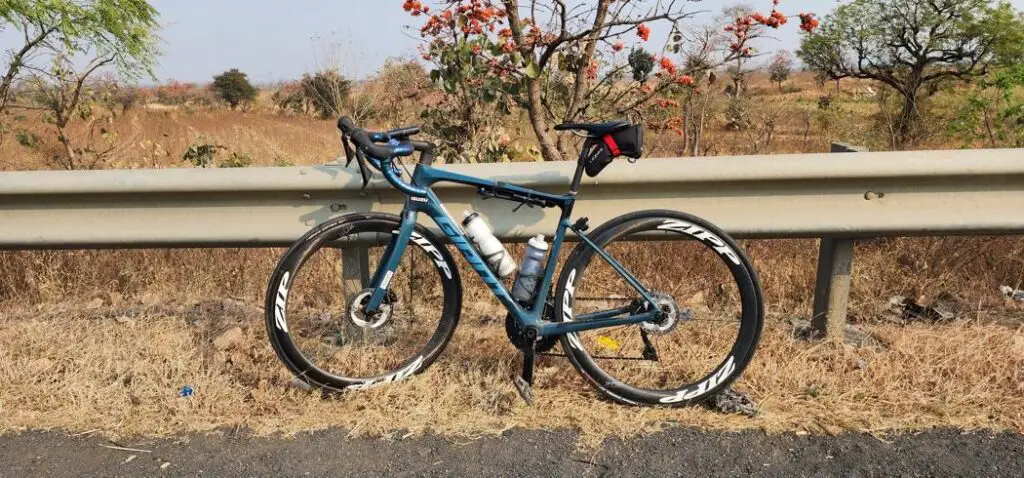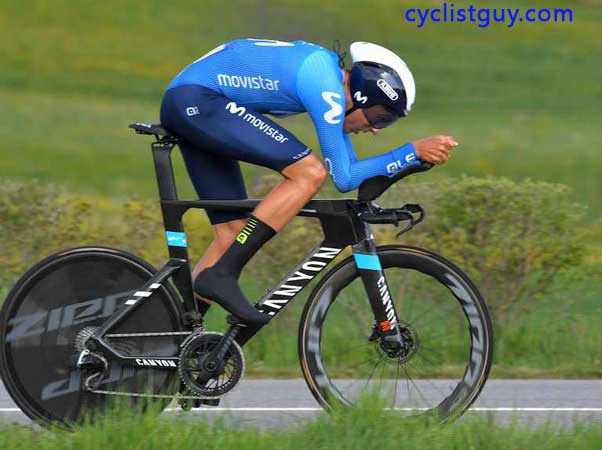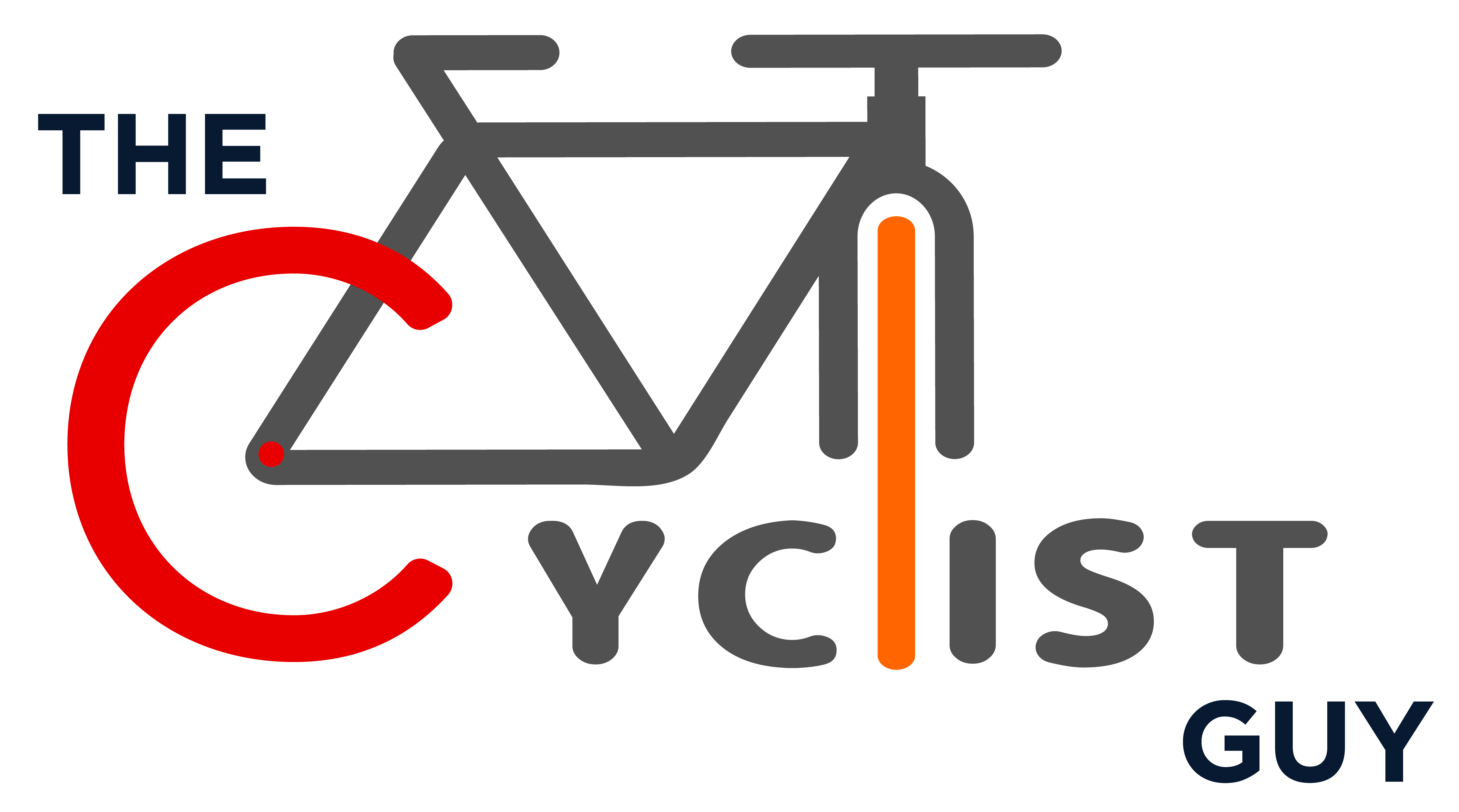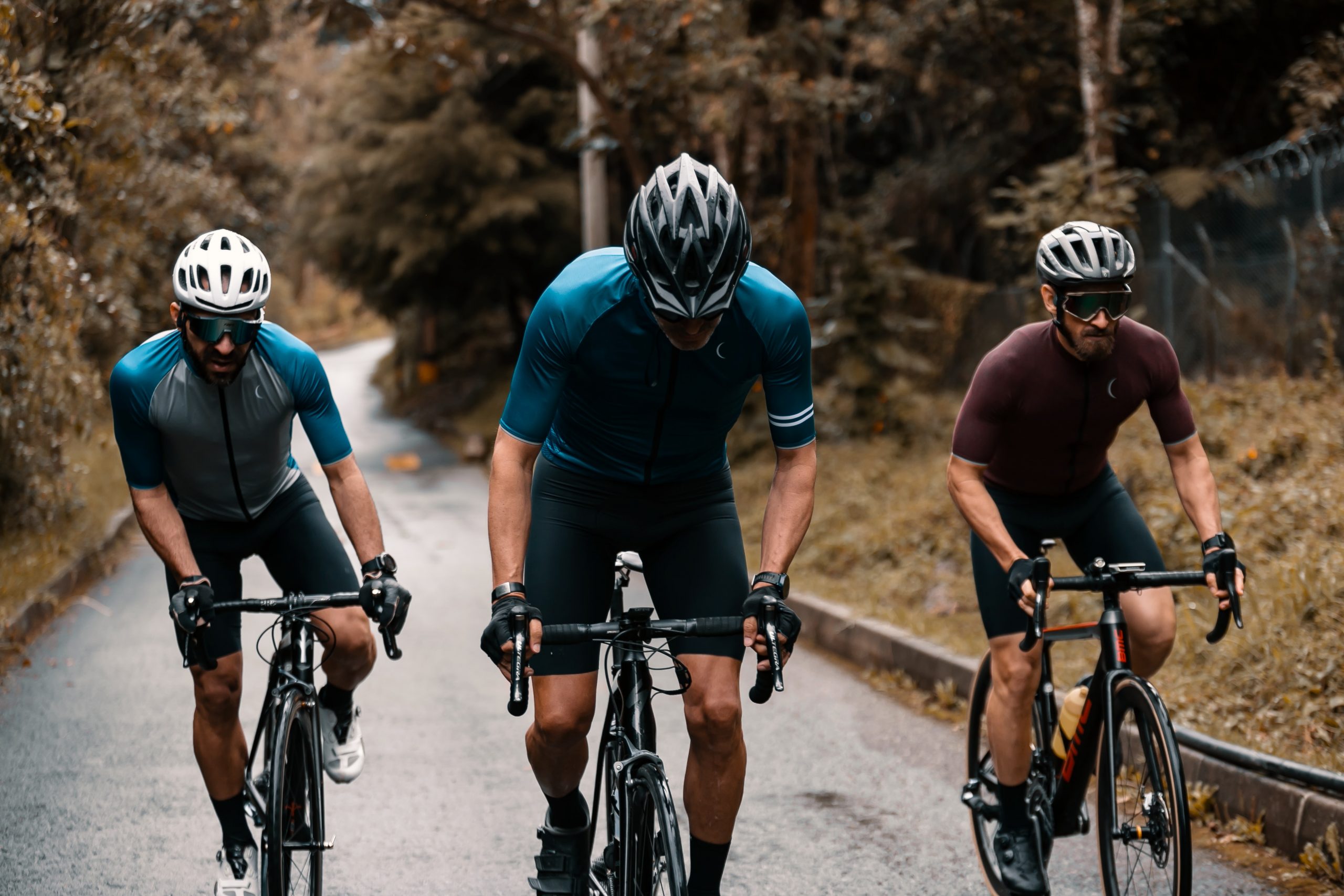The answer to how many miles can you bike in a day will vary depending on who you ask. Where an average person goes around 12-14 miles per hour on a bike, pro cyclists can cover that distance in less than half the time
In this article, our focal point is not how many miles can the average person bike in an hour if they go as fast as they can.
Instead, we are taking the middle ground and discussing how many miles the common cyclist covers in general in an hour, taking into consideration a minute or two of natural stops or minimal terrain difficulties, but disregarding heavy snow or storms or prolonged amounts of rest during the ride.
In short, we will be finding out the average bike speed of an average cyclist. Let’s get into it then, shall we?
Factors Affecting How Far Can You Bike in A Day?
There are many things that go into the matter of how far you will go while riding your bike.
What kind of bike you are riding, what your riding technique is, and what kind of road are you riding on -these are all big factors that decide your mileage.
Average miles per hour on a bike will also depend on the physical status of the rider. While riding, all of your hours won’t go the same way.
During the last few hours of cycling, a rider may feel less energized and his speed can slow down significantly
Let us look into the other variables that also impact the number of miles the average cyclist can cover per hour.

Fitness
Fitness is probably the biggest impactor. Cycling is a rigorous activity. Not only does it require a lot of energy, but also amazing motor control and endurance.
It is not uncommon for people to bike for multiple hours on end. Besides avid cyclists, many people also ride their bikes for 2-4 hours or more commute.
They typically have consistent speeds of 15 miles per hour or higher. As for pro cyclists doing training, the answer to how long it takes to bike 25 miles can easily be one hour or less!
On the opposite side of the spectrum, An out-of-shape person may not even be able to bike for an hour. But assuming that they can bike for an hour without taking multiple breaks in between, such people can cover around 10 miles in an hour.
Now coming to the beginner cyclist who has learned to cycle recently, or who normally doesn’t cycle, such a person — with average fitness levels — biking an hour can cover about 12-14 miles.
According to the American Council of Exercise (ACE), cycling at
- 12-13 miles per hour is a moderate level of exercise
- 16-19 mph is a racing speed.
- 5.5 mph consistent speed
,with long breaks in between is the most leisurely pace
A minimum speed of 5.5 mph (consistent speed, not with long breaks in between) is labeled by ACE to be the most leisurely pace of cycling.
Considering these guidelines, it can be said that a person of average fitness levels can average out at around 12-14 miles per hour. But also remember that cycling is a great form of exercise that increases fitness levels.
So, if you are struggling to maintain a 12-14 mph speed, simply practice some more and you’ll find yourself quite comfortably reaching such speeds. Even a 70-year-old can reach 15 mph with reasonable practice!
1 Hour Bike Ride Distance Km
The distance covered in a 1-hour bike ride can vary significantly depending on several factors such as the rider’s fitness level, the terrain (flat or hilly), the type of bike (road, mountain, hybrid), and the riding conditions (weather, traffic).
Here are some general estimates:
- Beginner Riders: If you’re new to cycling or ride casually, you might average speeds of about 12-15 km/h (7.5-9.3 mph). This would translate to a distance of approximately 12-15 kilometers in one hour.
- Intermediate Riders: With a bit of experience and improved fitness, riders might average speeds of 16-20 km/h (10-12.4 mph), covering a distance of 16-20 kilometers in an hour.
- Advanced/Recreational Riders: More serious cyclists on road bikes, assuming relatively flat terrain and moderate effort, might average 20-25 km/h (12.4-15.5 mph), leading to a distance of 20-25 kilometers in one hour.
- Competitive Cyclists: Highly trained cyclists or those in competitive settings might average speeds well over 25 km/h (15.5 mph), even reaching up to 30-40 km/h (18.6-24.9 mph) on flat terrain, which would mean covering 30-40 kilometers in one hour.
Bike Type

How many miles can the average person bike in a day will also vary depending on the type of bike they use.
Although there are as many as around 20 types of bikes, we will only talk about the three most important ones here:
- The road bike
- The mountain bike,
- The hybrid bike.
Road bikes are designed to be speed-efficient whereas mountain bikes are built robust for safety purposes.
The purpose of the mountain bike is for riding off-road on unpaved terrain and hilly areas.
Obviously, to be able to handle such rocky and obstacle-filled terrain, the mountain bike is made sturdier and heavier leading to decreases in speed.
Specifically speaking, the mountain bike has thicker tires and is built stronger. The tires also have rubber padding which makes for a rougher texture than that of on-road bike tires.
In addition, if the frame is made of carbon instead of aluminum, you’ll see an increase in speed, but still less than that on a road bike.
Even the geometry of the bike types affects the speed, as the road bike is designed for the rider to sit in a more streamlined posture to take advantage of aerodynamics, whereas the mountain bike prompts the rider to sit more upright. This is, again, for safety purposes.
The reason you average a lower speed on the mountain bike is that you need to pedal harder to move the heavier bike.
Add to that the fact that mountain bikes also often have suspension technology. It means you have to exert force not only to move the weight of the bike but also to power the suspension!
As a result, how long it takes to bike 5 miles in a mountain bike will seem much slower! It can be as slow as almost one hour or more.
The average mountain bike speed can be 10mph for solo rides, group rides tend to be much lower. The road bike is significantly faster than the mountain bike.
The increase in speed comes due to MTB being mostly used for trekking and hilly roads.
The difference in speed between a mountain bike and vs road bike is about 3 mph. This means that if you were able to average a speed of 13 mph on a road bike, then you would be able to cover 10 miles an hour on a mountain bike. Not too bad, but still significant.
What about the hybrid bike which tries to make the best of both worlds (of the road and the mountain bike)?
Well, there has been an experiment conducted which unfortunately shows that the hybrid bike, while producing slightly more speed than the mountain bike, is still significantly slower than the road bike.
The average number of miles covered per hour on all three bike types was 18.6.
Although the road bike averaged speeds of over 3 mph in comparison to the other two bike types, it was found that the mountain bike and the hybrid bike provided much more comfortable riding experiences, due to them offering more stability.
Thus, the experiment acknowledges that the road bike is much faster, but stresses that the other types offer other advantages which may appeal to you more.

Terrain
One of the ground rules that we set involved the terrain: if the terrain is too rocky or excessively riddled with obstacles, then the speed will naturally decrease.
However, it is important to know that hilly areas may sometimes even make for an increase in speed! So, how long does it take to bike 10 miles on terrain?
Naturally, downhill roads are easier on the biker — as they don’t have to pedal. Therefore, if you ride on hilly terrain, then the downhill portion will tend to yield higher speeds than the flat routes.
So, an average of a mile per 5 minutes on-road can change into a mile per 2.5 minutes. So 10 miles will be covered in 25 minutes!
On the other hand, going uphill will not only require the exertion of more energy but will also tend to produce lower speeds.
But if the incline is relatively constant say, 20 degrees, and also if the proportion of the incline is similar to that of the decline, then expect to average the same mph as a normal, paved route.
Wind
We say wind, not weather conditions in general because we are looking at the average amount of miles covered by the average cyclist in average conditions.
That said, the wind does play a significant role, which you might underestimate if we didn’t list it here.
How many miles can you bike in an hour On a windy day, your bike speed will considerably vary from other days.
If you go against the wind, then you might struggle to hit the 12-mile mark whereas you might comfortably go over 14 mph if the wind is in your favor. Also, it feels damn good to bike with the wind in your sails!
Additionally, we can’t talk about wind without talking about aerodynamics.
If you modify your posture and make it more streamlined which means you stoop down, like you see bike racers doing then you will minimize the wind at your face.
It is easier to do so on a road bike rather than a mountain bike due to the geometry, as discussed.
Is biking 10 miles in an hour good?
Considering the discussion till now, it appears that how long to bike 10 miles should take under 1 hour. Going 10 miles in an hour on your bike is not a good speed.
However, we wouldn’t say it’s a bad speed either. Sure, it’s on the low side, but hitting double digits means that you are at least not slacking.
Also, if you are biking at 10 miles per hour now, you can very easily improve your speed by 5 mph or more if you keep at it.
However, if you have a health condition, or if you’re quite aged, then we recommend you stay under 15 mph. 10 mph, then, is a good speed for beginners and old people.
On the other hand, even if you’re old and well past your prime, or even if you are sick, if you are comfortably able to cycle, then do so, for cycling is a very good exercise.
Also, bear in mind that a man in his 70s can also reach 15 mph. So, have confidence and keep on cycling!

How many miles can a person ride a bike in one day?
If you just started cycling, you might wonder how many miles should bike a day ?
If you’re asking the maximum limit of a person riding a bike in one day, then just take a look at marathons or even charity events where non-professional cyclists ride their bikes for long periods of time.
For example, there are four-to-six-hour bike riding events where the cyclists non-professional ones ride with an average speed of 15 mph.
For example, there are four-to-six-hour bike riding events where non-professional cyclists ride with an average speed of 15 mph.
It’s important to note that “one day” does not mean 24 hours, as the world record for a 24-hour bike ride is 568.8 miles.
Typically, people ride for exercise or journeys for 2-4 hours, covering an average of 60 miles. The amount of time someone rides depends on the amount of time they ride.
For a fit person, 120 miles can be covered in a single day, while for the average person, a 2-hour ride with a 12 mph speed would cover 24 miles and be considered part of a healthy lifestyle.
Is 20 miles in an hour on a bike good?
It is very good. But odds are, you won’t be able to cover 20 miles an hour unless you’ve had more than a little practice.
In fact, 20 mph is mostly only possible by semi-pro cyclists. If you practice for months and maintain a healthy lifestyle, then you might be able to go at 20 mph.
How far can the average person bike in 30 minutes?
On the surface, we just divide the mph by two to get that.
For example, if a person can cover 12 miles per hour, then theoretically they would be able to cover half of that 6 miles in 30 minutes. However, the answer is actually slightly more complex.
You see, it’s easier to maintain a higher speed for 30 minutes than for an hour. But 30 minutes is still a long time.
It’s certainly not a sprint that you can go at full speed for the entire duration. Therefore, how far the average person can bike in 30 minutes is slightly higher than half the distance they can cover in 60 minutes.
A Final Word
In summary, the beginner cyclist struggles to reach 15 mph whereas pros can comfortably go at over 25 miles per hour.
How far can you bike in an hour will be dependent on your fitness level, but your bike type, the terrain, and the wind may also play significant roles.
That said, whether or not you can go at 15 mph should not be a problem. 15 mph, not to mention 20 mph, is actually quite a high speed for beginner cyclists to reach.
For the beginner and unfit person, a speed of 10 mph is fine. As long as you continue cycling, the benefits will steadily accrue and help you reach higher speeds.

Steven is a professional cyclist and his passion is cycling. He has been cycling for the last 6 years and he loves using bikes while outing as well. Based on his experiences with the different types of bikes; he is sharing his opinions about various bikes so that a beginner can start right away. Find him on Twitter @thecyclistguy Happy Biking.


Leave a Reply